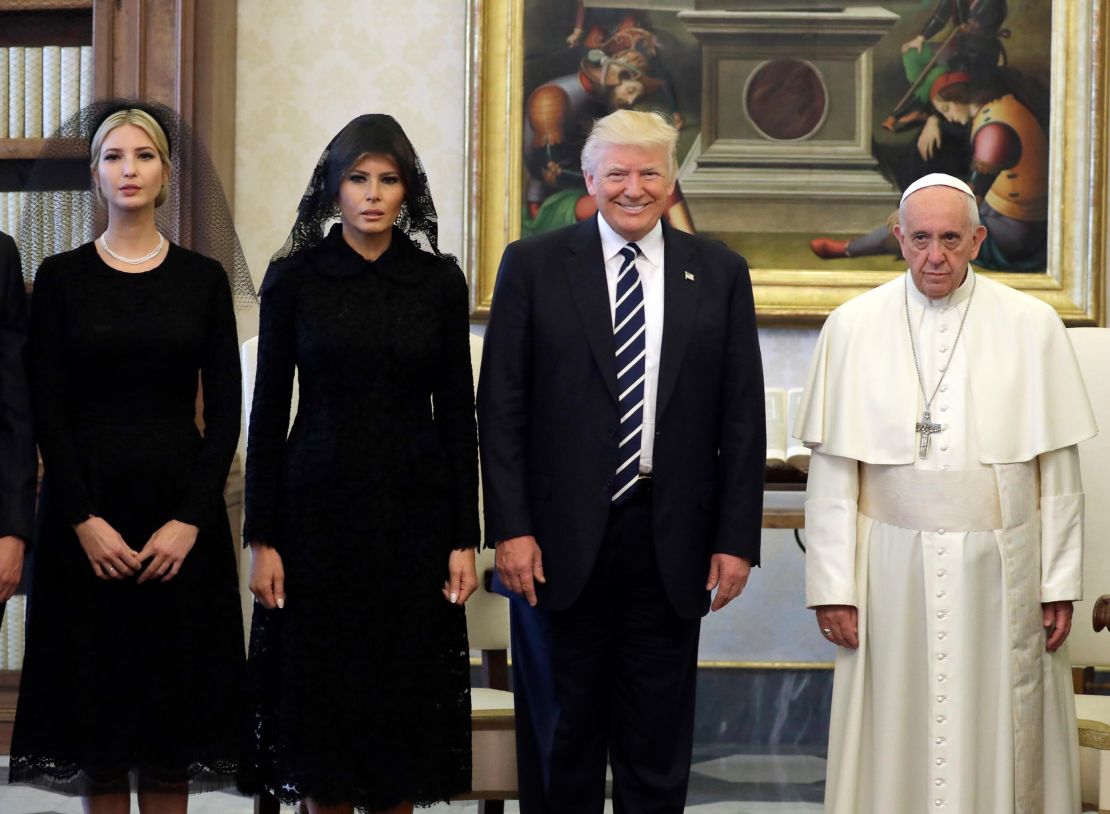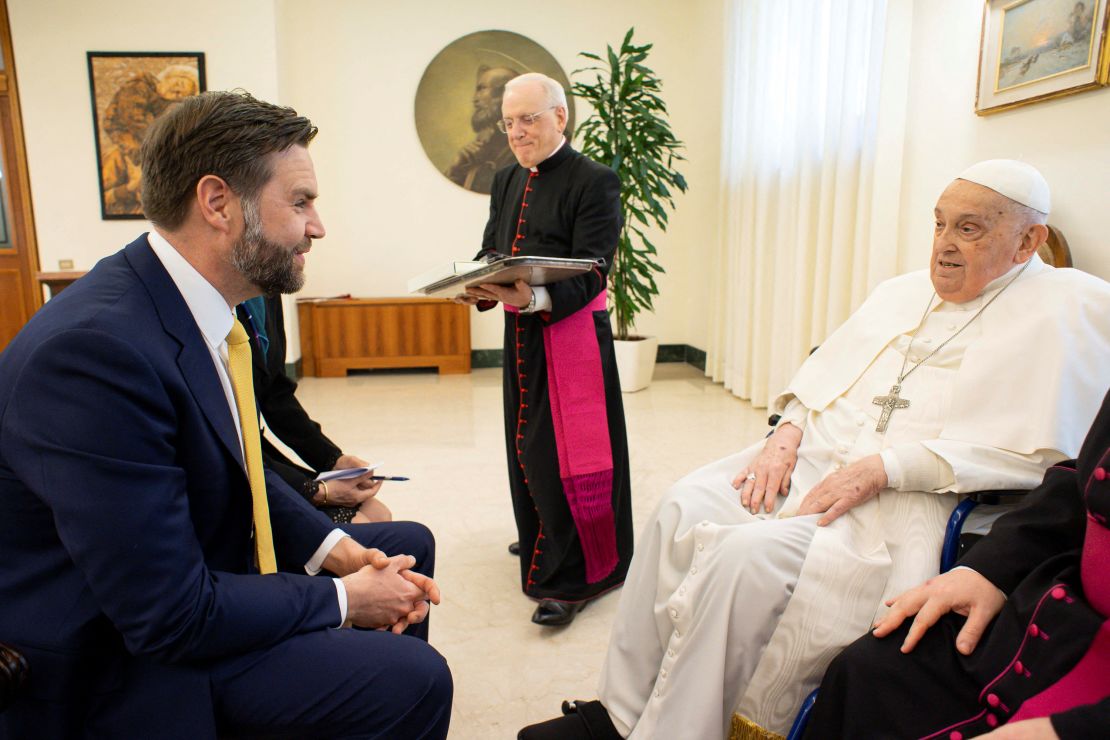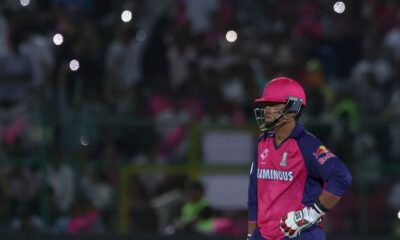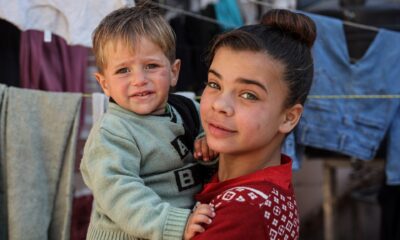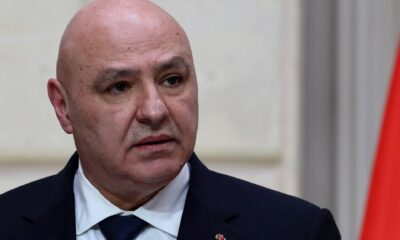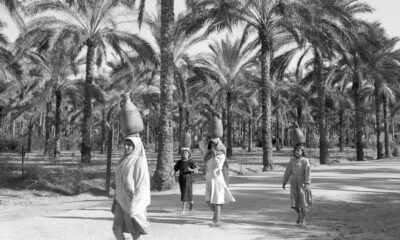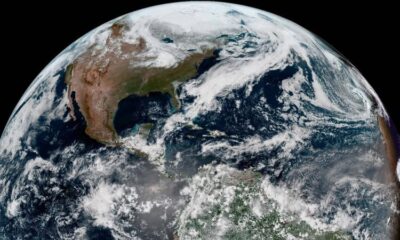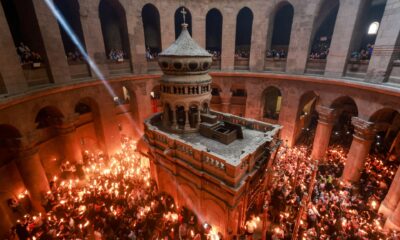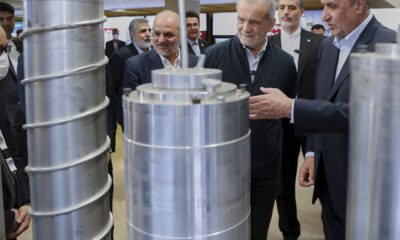Rome
CNN
—
Pope Francis, the first Latin-American pontiff, renowned for his outspoken advocacy for the poor and insistence on a more welcoming Catholic Church, has died at the age of 88.
Francis was a pope of firsts – the first pontiff from the global south, the first Jesuit to be chosen as leader of the Catholic Church and the first to call himself Francis. Before taking up office, he had never lived or worked in Rome. A disruptor and outsider to the church’s establishment, his reforms faced strong resistance from powerful minorities within Catholicism and political forces without.
Francis spent his final days in service of the church, participating as much as he could in the celebration of Easter, the high point of the Christian calendar. He was unable to lead the main Holy Week services but appeared in a wheelchair on the balcony of St. Peter’s Basilica in Rome to wish worshippers a happy Easter Sunday.
To most believers, he will be remembered as a pastorally sensitive leader who sought to re-connect the church with the essentials of the Christian faith. Francis sought to follow his namesake, St. Francis of Assisi, the 13th-century Italian friar renowned for poverty, peace, and care of creation.
He made defense of the planet, the plight of migrants and building peace through dialogue the pillars of his papacy and sought to live out his vision of a humbler church, opting to reside not in the Vatican’s Apostolic Palace but in its guesthouse, Casa Santa Marta.
On the night of his election on March 13, 2013, Pope Francis set the tone for his pontificate.
“Let us pray for the whole world, that there may be a great spirit of fraternity,” he said from the balcony of St. Peter’s Basilica.
He stayed true to those words, encouraging all people, no matter their religion or race, to remember their common humanity. Francis was a bridge builder, seeking to work with all faiths and denominations.
He inherited a Vatican in crisis. Benedict XVI had taken the shock decision to resign after being unable to implement reforms of the church’s central government, the Roman Curia. Abuse scandals had rocked the church, while regulators had identified serious failures with the Vatican Bank.
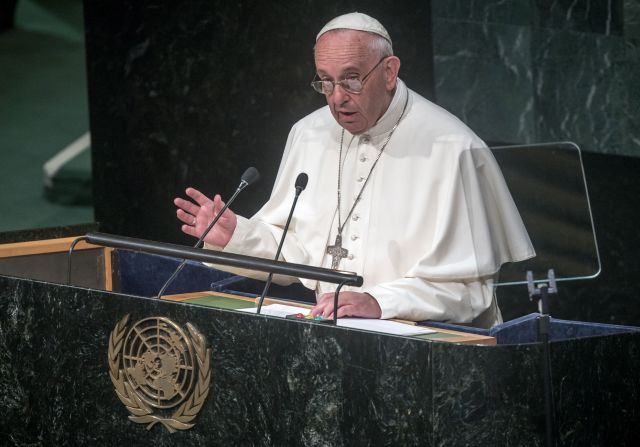
his speech, he urged world leaders to adopt concrete solutions to combat widespread poverty and environmental destruction.” class=”image__dam-img image__dam-img–loading” onload=’this.classList.remove(‘image__dam-img–loading’)’ onerror=”imageLoadError(this)” height=”2095″ width=”3000″ loading=’lazy’/>
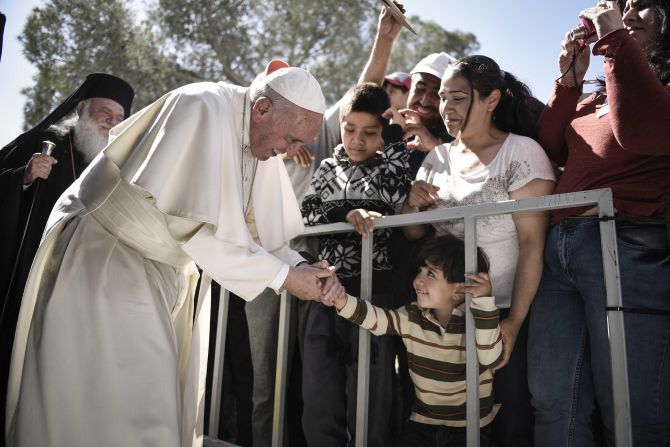
during a visit in which he showed solidarity with migrants fleeing war and poverty. ” class=”image__dam-img image__dam-img–loading” onload=’this.classList.remove(‘image__dam-img–loading’)’ onerror=”imageLoadError(this)” height=”1669″ width=”2500″ loading=’lazy’/>

was there to pay tribute to those who died in the Holocaust. ” class=”image__dam-img image__dam-img–loading” onload=’this.classList.remove(‘image__dam-img–loading’)’ onerror=”imageLoadError(this)” height=”1664″ width=”2500″ loading=’lazy’/>
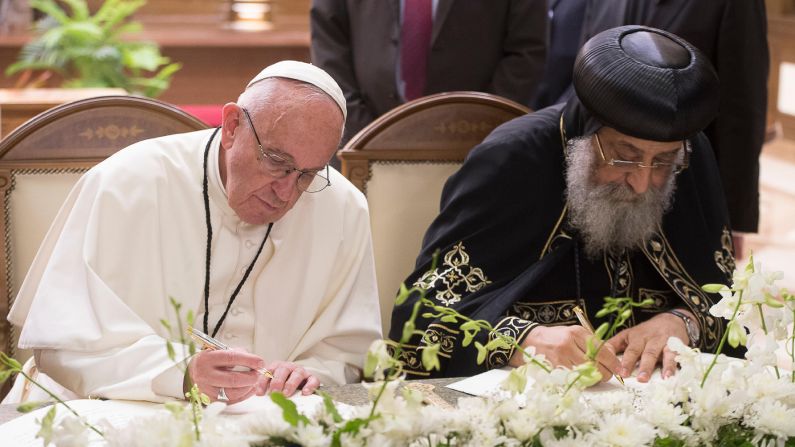
two-day trip to Egypt to forge Muslim-Christian brotherhood and show solidarity with the country’s persecuted Coptic Christian minority.” class=”image__dam-img image__dam-img–loading” onload=’this.classList.remove(‘image__dam-img–loading’)’ onerror=”imageLoadError(this)” height=”1569″ width=”2790″ loading=’lazy’/>

private audience at the Vatican in May 2017. Joining the President are his wife, Melania, and his daughter Ivanka.” class=”image__dam-img image__dam-img–loading” onload=’this.classList.remove(‘image__dam-img–loading’)’ onerror=”imageLoadError(this)” height=”2966″ width=”5272″ loading=’lazy’/>
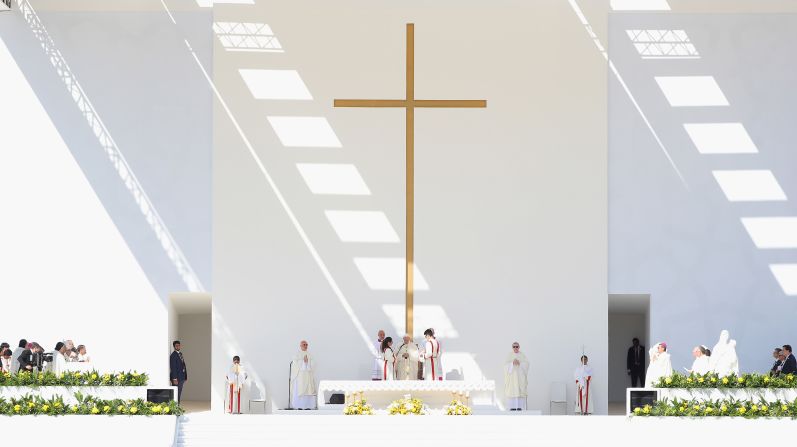
the first time a pope has visited an Arab Gulf state, and it was the first time a pope had celebrated Mass in the Arabian Peninsula, the birthplace of Islam.” class=”image__dam-img image__dam-img–loading” onload=’this.classList.remove(‘image__dam-img–loading’)’ onerror=”imageLoadError(this)” height=”1403″ width=”2500″ loading=’lazy’/>
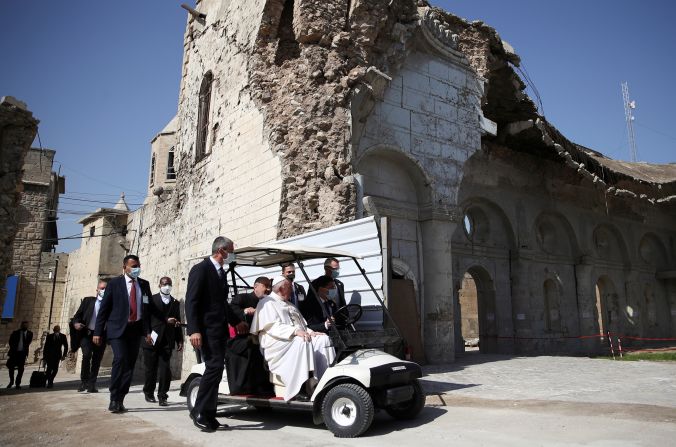
the first-ever papal visit to Iraq, and it was Francis’ first trip outside Italy since the start of the Covid-19 pandemic.” class=”image__dam-img image__dam-img–loading” onload=’this.classList.remove(‘image__dam-img–loading’)’ onerror=”imageLoadError(this)” height=”1654″ width=”2500″ loading=’lazy’/>
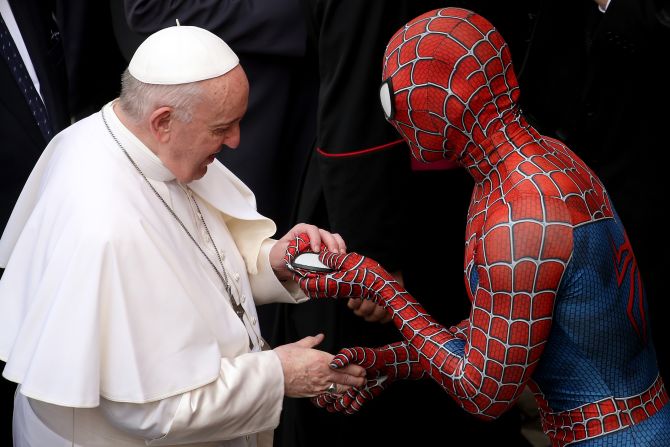
shakes hands with a man dressed as Spider-Man while visiting with people at the Vatican in June 2021. The masked man, who works with sick children in hospitals, also gave a Spider-Man mask to the Pope.” class=”image__dam-img image__dam-img–loading” onload=’this.classList.remove(‘image__dam-img–loading’)’ onerror=”imageLoadError(this)” height=”1667″ width=”2500″ loading=’lazy’/>
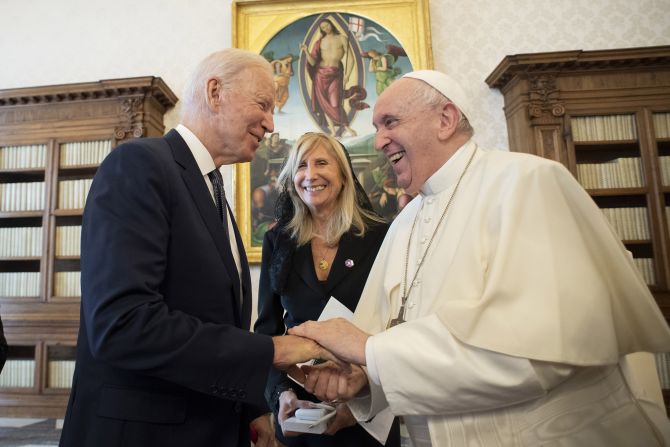
his trip to the Vatican in October 2021. Between them is Italian translator Elisabetta Savigni Ullmann. Challenge coins originated in the military, and this one included the insignia of a Delaware Army National Guard unit that Biden’s son Beau served in. Biden said during his visit that coins are given to “warriors and leaders” and that the pope is “the most significant warrior for peace I’ve ever met.” Biden, a devout lifelong Catholic, met with the Pope for 90 minutes and said he discussed “a lot of personal things” with the pontiff. It was the fourth meeting between Francis and Biden, but their first since Biden became President.” class=”image__dam-img image__dam-img–loading” onload=’this.classList.remove(‘image__dam-img–loading’)’ onerror=”imageLoadError(this)” height=”1667″ width=”2500″ loading=’lazy’/>
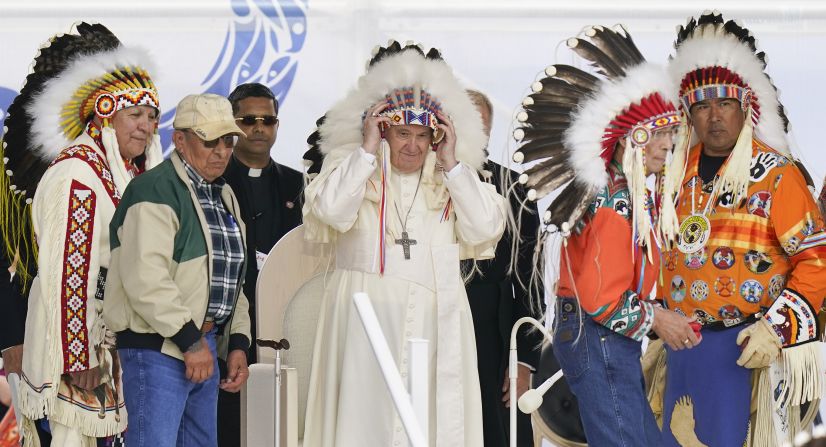
Francis spoke of his “sorrow, indignation and shame” over the Catholic Church’s role in the abuse of Canadian Indigenous children in residential schools. He apologized and promised a “serious investigation” into what happened.” class=”image__dam-img image__dam-img–loading” onload=’this.classList.remove(‘image__dam-img–loading’)’ onerror=”imageLoadError(this)” height=”1973″ width=”3646″ loading=’lazy’/>
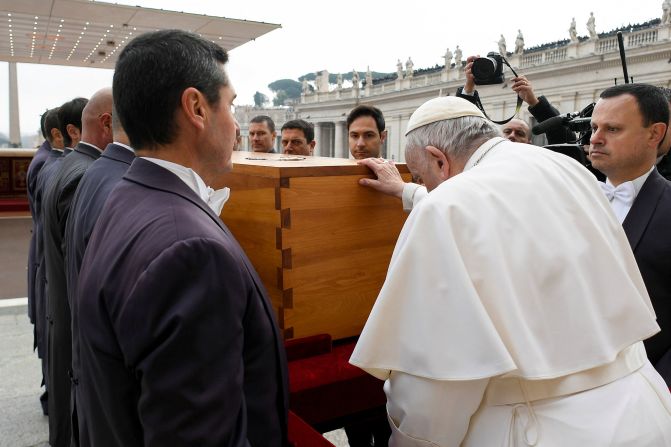
Benedict’s funeral was attended by tens of thousands at St. Peter’s Square.” class=”image__dam-img image__dam-img–loading” onload=’this.classList.remove(‘image__dam-img–loading’)’ onerror=”imageLoadError(this)” height=”2000″ width=”3000″ loading=’lazy’/>

Francis’ visit to the DRC — the first papal visit since 1985 — was part of a six-day trip that also included South Sudan. In those two countries, Catholics comprise about half of the population and the Church is a key stakeholder in health and education systems as well as in democracy-building efforts. ” class=”image__dam-img image__dam-img–loading” onload=’this.classList.remove(‘image__dam-img–loading’)’ onerror=”imageLoadError(this)” height=”1334″ width=”2000″ loading=’lazy’/>
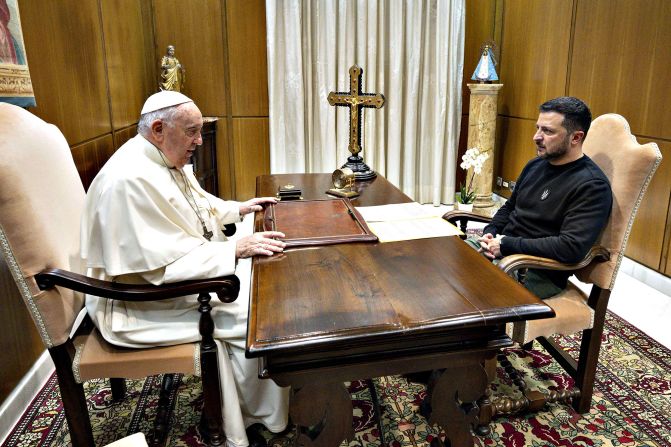
meets with Ukrainian President Volodymyr Zelensky at the Vatican in May 2023. It was the first face-to-face meeting between Zelensky and the Pope since Russia invaded Ukraine in February 2022. The Pope has been outspoken in his support for an end to the war.” class=”image__dam-img image__dam-img–loading” onload=’this.classList.remove(‘image__dam-img–loading’)’ onerror=”imageLoadError(this)” height=”1333″ width=”2000″ loading=’lazy’/>

He was on his way to a Rome hospital for abdominal surgery. The procedure was to repair a hernia that the Vatican said was causing “recurrent, painful and worsening” symptoms.” class=”image__dam-img image__dam-img–loading” onload=’this.classList.remove(‘image__dam-img–loading’)’ onerror=”imageLoadError(this)” height=”1333″ width=”2000″ loading=’lazy’/>

working session on artificial intelligence during the G7 summit near Bari, Italy, in June 2024. Francis, the first pope to participate in the summit, is determined to use the soft power of his office to try to ensure that the development of AI serves humanity and does not turn into a 21st-century Frankenstein’s monster.” class=”image__dam-img image__dam-img–loading” onload=’this.classList.remove(‘image__dam-img–loading’)’ onerror=”imageLoadError(this)” height=”1667″ width=”2500″ loading=’lazy’/>
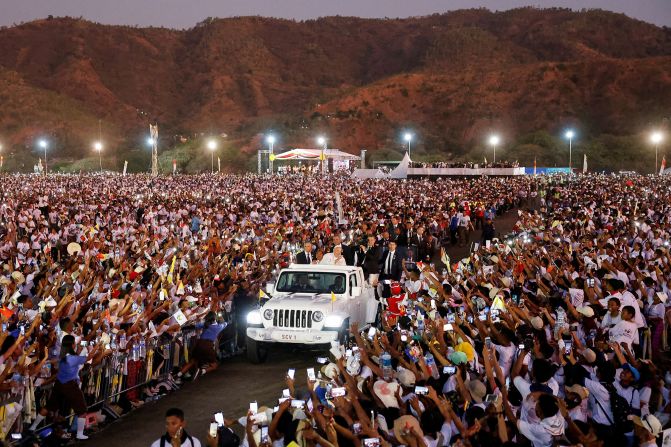
leading a Holy Mass at the Esplanade of Tasi Tolu in Dili, East Timor, on September 10, 2024.
” class=”image__dam-img image__dam-img–loading” onload=’this.classList.remove(‘image__dam-img–loading’)’ onerror=”imageLoadError(this)” height=”1333″ width=”2000″ loading=’lazy’/>
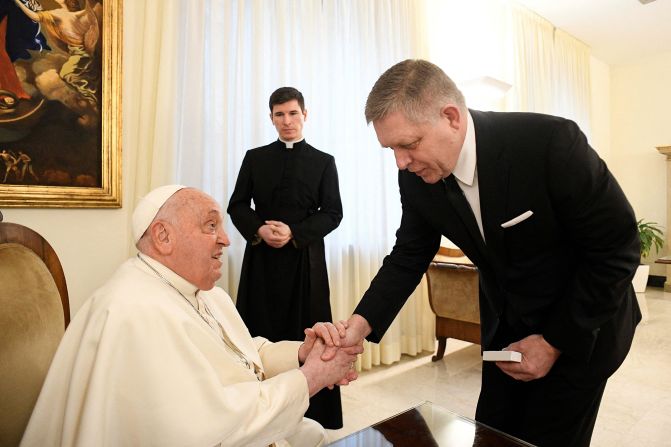
the pope was admitted to a hospital in Rome. It was later announced that he was battling pneumonia in both of his lungs.” class=”image__dam-img image__dam-img–loading” onload=’this.classList.remove(‘image__dam-img–loading’)’ onerror=”imageLoadError(this)” height=”1333″ width=”2000″ loading=’lazy’/>

he was discharged from the Gemelli Hospital in Rome in March 2025. Though he looked frail and struggled to speak, he addressed the crowd outside the hospital, thanking them and acknowledging one woman in the crowd who was holding flowers. He also gave a blessing, though he appeared to have some difficulty raising his arms.” class=”image__dam-img image__dam-img–loading” onload=’this.classList.remove(‘image__dam-img–loading’)’ onerror=”imageLoadError(this)” height=”1242″ width=”2000″ loading=’lazy’/>
Pope Francis’ life in pictures
Francis moved swiftly to overhaul the bank and the management of Vatican finances. His papacy saw the first cardinal prosecuted and convicted for financial crimes in a Vatican court. He issued a new constitution for the Roman Curia and embarked on a mission to reform the church’s internal culture from an overly hierarchical model to one of inclusivity.
He alarmed Vatican officials by speaking off-the-cuff at audiences, holding freewheeling press conferences at the back of his papal plane and using straightforward, sometimes salty, language.
His persistent critiques of church “elites” and those who held onto “backward” ideologies meant he developed some powerful enemies, particularly among conservative US groups. While some cardinals had voted for “Jorge Bergoglio,” the Argentine with a reputation as a tough, austere Jesuit, they had not expected that the unpredictable “Pope Francis” would emerge to set the church on a path of profound renewal.
“We cannot insist only on issues related to abortion, gay marriage and the use of contraceptive methods,” Francis said soon after his election. Although he spoke out against abortion, he focused on other subjects, changing Catholic teaching to insist that the death penalty is “inadmissible” and possession of nuclear weapons immoral. He criticized global inequalities, stating, “such an economy kills,” and called on rich countries to do more to tackle the climate crisis.
Francis was also willing to admit his mistakes, and these included his handling of the clerical sexual abuse scandals, the biggest crisis to hit the Catholic Church in 500 years. He spoke out on abuse, met with victims and issued a string of church laws designed to tackle it. But there were times when he was slow to act. Victims’ groups will be looking to his successor to ensure the church follows through with the changes he began.
Jorge Mario Bergoglio was born on December 17, 1936, in Buenos Aires to parents of Italian descent.
The oldest of five children, the pope often mentioned fond memories of a close-knit family and of how his Italian grandmother shaped his faith. His paternal grandparents narrowly escaped a deadly shipwreck when they migrated from Italy to Argentina, an experience that no doubt influenced his advocacy for those making perilous journeys across the Mediterranean in search of a better life in Europe.
When he was 16, Bergoglio had a profound experience during confession which convinced him to train for the priesthood. He entered the seminary but three years later started training to become a Jesuit, the religious order renowned for its missionary work. A gifted leader in 1973, at the young age of 36, he was appointed head of the Jesuit order in Argentina, a position he would hold until 1979.
During that time, the repressive military junta in the country began its “Dirty War,” making around 30,000 dissenters disappear, including Jesuits working with the poor in the Buenos Aires slums.
Bergoglio would later face allegations that he collaborated with the dictatorship, claims that haunted him right up until his election as pope. Two fellow Jesuits, Franz Jalics and Orlando Yorio, accused him of turning them in when they were kidnapped and tortured by the regime in 1976. As time passed, however, evidence emerged that Bergoglio worked consistently to help those who opposed the dictatorship. Italian journalist Nello Scavo reported that he saved more than 100 people during the Dirty War while Jalics also withdrew his claim, celebrating mass with Francis in Rome in 2013.
Tensions within the order, however, culminated in his “exile,” as in 1990 he was sent 500 miles away to Cordoba with no fixed assignment. But he later described his two-year spell in the wilderness as a transformative experience.
In 1992, Bergoglio was appointed an assistant (auxiliary) bishop of Buenos Aires, and five years later became archbishop. He would regularly take the metro to visit the city’s poorest areas, lived in a simple apartment rather than the archbishop’s palace and turned his predecessor’s stately office into a storeroom for food and clothes for the poor.
He was made a cardinal in 2001 and soon became a prominent national church leader. Although he tended to avoid Rome, Bergoglio began to be noticed by his fellow cardinals and was considered as a candidate to succeed John Paul II at the 2005 conclave. However, according to one account, he withdrew his candidacy so as not to prolong the election.
By the time of the 2013 conclave, the then 76-year-old had one eye on retirement and was no longer seen as a frontrunner for the papacy.
But during the pre-conclave meetings, he delivered an electrifying speech warning that a church which turns inwards becomes sick and narcissistic. His humility, simple lifestyle, and closeness to the marginalized in society also gained him support.
When Bergoglio was chosen, the cardinal next to him, Claudio Hummes of Brazil, hugged him and said, “Don’t forget the poor.” He later said Hummes’s words inspired him to take the name Francis after St. Francis of Assisi. He rejected papal finery, opting for plain black shoes and the same silver pectoral cross and ring that he had used as Archbishop of Buenos Aires. He would go on to set up dorms, shower rooms and a barbershop for the homeless at the Vatican. A new era of papal simplicity had begun.
After reading about migrant deaths in the Mediterranean, Francis decided his first trip would be to the Italian island of Lampedusa, a gateway for many seeking refuge in Europe. He tried to book a plane ticket for himself, but the airline informed the Vatican that someone claiming to be the pope was trying to travel with them.
An official trip was arranged, during which he celebrated Mass on an altar made from recycled migrant boats and condemned global indifference to refugees. He would make advocacy for migrants a constant theme, urging every Catholic community across the world to host one family of new arrivals.
Francis practiced what he preached and, in 2016, after visiting the Greek island of Lesbos, brought back 12 Muslim refugees on his papal plane. Francis likened migrant detention centers in Libya to “concentration camps” and, in the run-up to the 2016 US presidential election, described Donald Trump’s plan to build a border wall as “not Christian.” The pope sent an extraordinary rebuke of Trump’s immigration deportation policies where he rebutted Vice President JD Vance’s attempt to use theology to justify the crackdown.
His interventions set him on a collision course with right-wing populist politicians, but he always insisted that his motivation was the Christian teaching to welcome “the stranger.”
Environmental and peacebuilding efforts
Francis’ interventions on the environment were intertwined with his concern for the poorest, who he saw as suffering the worst impacts of climate disasters while wealthier countries refused their fair share of the burden. He discussed the “right of the environment” at the United Nations, released two encyclicals urging action at UN climate talks, and announced plans to include “ecological sin” in official Catholic teaching.
The pope’s appeals often received a warm reception from non-Catholic politicians and policymakers. But he also ran into opposition, including from some in the US Republican Party – former presidential contenders Jeb Bush and Rick Santorum both publicly criticized his calls. And when the pope convened a bishops’ summit about the Amazon, Brazilian security services monitored preparations, viewing it as a rebuke to the policies of the then right-wing populist president, Jair Bolsonaro. Francis, however, never seemed overly perturbed.
Nine days after his election, Francis told diplomats gathered in the Vatican that he wanted to be a builder of bridges across religions and create “authentic fraternity” throughout humanity.
He focused on the relationship with the Muslim world, seeking to repair ties that had become strained during the Benedict XVI pontificate. He worked closely with Grand Imam of Al-Azhar Ahmed al-Tayeb, a leading Sunni authority, signing a landmark declaration with him on “Human Fraternity” during a trip to the United Arab Emirates, the first visit by a pontiff to the Arabian Peninsula. He made a daring trip to Iraq amid the Covid-19 pandemic in 2021, meeting Grand Ayatollah Al-Sistani, the spiritual leader of the world’s Shia Muslims.
During a trip to Indonesia, the world’s largest Muslim-majority nation, Francis signed another interfaith declaration when he met the Grand Imam of the country at the Istiqlal Mosque, Jakarta, which is linked to the Catholic cathedral opposite by a “tunnel of friendship.” The trip was the first stop in a marathon tour of southeast Asia and the Pacific, which saw him highlight interfaith co-operation and the growing importance of the region for global Catholicism.
Francis’ belief in dialogue bore some fruit in 2015 when he acted as a mediator between Cuba and the US, helping in the re-establishment of diplomatic relations.
But amid an eruption in global conflicts, the pope was something of a voice crying out in the wilderness.
He repeatedly urged a ceasefire in the Israel-Hamas war sparked by the October 7, 2023, Hamas attacks, and met with families of Israeli hostages taken by Hamas, as well as those caught up in the Israeli assault in Gaza. “This is not war. This is terrorism,” he said. Francis insisted peace would only come through a two-state solution. As conflict raged across the Middle East, the pope insisted that war is always a “defeat” and that a use of force in self-defense that is not proportionate is “immoral.”
However, his attempts to create space for dialogue also saw him criticized following Russia’s invasion of Ukraine, as he generally avoided naming President Vladimir Putin, and Russia, as the aggressor.
The pope remained in contact with Ukrainian President Volodymyr Zelensky, meeting him in the Vatican in May 2023 and in October 2024, and more than once broke down in tears publicly as he talked about the suffering of people in Ukraine.
But he also sparked anger in Kyiv after saying Ukraine should have the “courage of the white flag” and negotiate to end the war with Russia.
Early on, Francis insisted he wanted a church that was “bruised, hurting and dirty” because it was out on the streets, rather than one that had become “unhealthy from being confined” and “clinging to its own security.” The manifesto for his papacy, found in the document “Evangelii Gaudium” (“The Joy of the Gospel”), warned against the church remaining bound up in outdated structures and customs or using rules to turn believers into “harsh judges.”
The pope’s signature reform was in his desire for a more credible church that was able to listen and understand the culture in which it operated. He began an ambitious, multi-year renewal process which sought to involve all the world’s 1.4 billion Catholics, and where topics including the role of women, celibacy for priests, church teaching on sex and the use of power were addressed. The backdrop was the clerical sexual abuse crisis, which exposed crimes against minors and the misuse of power and cover-ups.
Francis also wanted to find ways to include Catholics who had divorced and remarried and so were prohibited from receiving communion. He later said they were permitted to receive the sacrament on a case-by-case basis. He also ushered in restrictions to the celebration of the traditional Latin mass, which he argued was being used to undermine church unity.
But these moves sparked criticism among some Catholics who accused the pope of undermining doctrine and tradition. Much of the resistance came from a vocal minority in the US, and across the English-speaking world. But he was never swayed. “I pray that there will not be schisms,” he said in 2019. “But I am not afraid.”
The most dangerous period for Francis began on a 2018 visit to Ireland, the ground zero of the clerical sexual abuse crisis. Mid-way through, Archbishop Carlo Maria Viganò, a former papal ambassador to the US, released a dossier claiming Francis had for years failed to deal with allegations of sexual misconduct against then Cardinal Theodore McCarrick, the former archbishop of Washington D.C., whom the pope had recently removed from public ministry and ordered to face a church trial. Viganò took the unheard-of step of calling for Francis to resign. The pope responded with silence, refusing to be drawn on the subject by journalists. Several American bishops, however, issued statements supporting Viganò.
The pope commissioned a Vatican investigation into the McCarrick case and Viganò’s claims. Its findings cleared Francis in 2020 but found that members of the church hierarchy – including former popes – were warned about McCarrick’s sexual impropriety. Viganò, who became associated with conspiracy theories involving the coronavirus and what he called the “great reset,” was excommunicated by the Vatican for schism after he rejected the authority of the pope and key Catholic teachings.
In 2022, a small group of cardinals sent him a series of questions – known as “dubia,” or doubts – viewed as an extraordinary public challenge to his authority. The cardinal leading the charge was US prelate Raymond Burke, previously leader of the church’s supreme court. The pope eventually removed Burke’s subsidized Vatican apartment and salary.
While conservatives tried to paint Francis as a “woke pope,” some Catholic progressives felt his changes did not go far enough. He insisted the door was closed on the ordination of women as priests and held back from allowing married men to be ordained.
Kate McElwee, executive director of the Women’s Ordination Conference, told CNN: “The tension between pastor and pontiff was often difficult for women to reconcile, and a profound disappointment to those energized by his messages of openness and inclusion.”
Sexual abuse scandals
Francis revealed a surprising blind spot on the abuse crisis. He did not talk very much about it in the early months of his pontificate. When he did, in 2014, he appeared defensive, insisting that “no one else has done more” to root out abuse than the church.
Amid a growing scandal in Chile, he initially refused to believe that Bishop Juan Barros of Osorno had covered up for a notorious abuser and said the allegations were “slander.” He later commissioned an investigation and made a heartfelt apology, admitting to survivors that he, too, “was part of the problem.”
On a visit to Belgium, where clerical sexual abuse scandals had been the subject of two parliamentary inquiries, the pope was told in frank terms by the country’s then prime minister to take concrete action.
Despite mistakes, Francis took concerted steps on abuse, including holding a Vatican summit where survivors addressed cardinals and bishops and made recommendations. It led to the pope issuing new norms for handling abuse allegations. The pope established the Holy See’s first pontifical commission for the protection of minors, although it struggled to find its place within the church’s central government and saw both a survivor and prominent expert resign in frustration.
“There is no doubt that the child sex abuse scandals are the central stain on his legacy,” said Vatican analyst and editor of Crux, John Allen.
“Over and over again, Pope Francis said the right things, he met with victims, he expressed heartfelt sorrow, he expressed resolve to get this right, but you know most critics, many victims would say that wasn’t matched with a policy of follow-through,” Allen added.
In 2023, the pope authorized blessings for same-sex couples, a landmark decision that sparked contrasting reactions.
While many welcomed it, bishops in Africa said they would not perform them, saying it would contradict the “cultural ethos of African communities.” The pope accepted their reasoning but responded firmly to what he described as “small ideological groups” who opposed the move. “No one is scandalized if I give a blessing to an entrepreneur who perhaps exploits people: and that is a most serious sin. Whereas they are scandalized if I give it to a homosexual… This is hypocrisy!”
The pope sought to avoid judgmental attitudes on people’s personal lives, and although he did not formally change doctrine on same-sex relationships – and apologized after reportedly using a derogatory word when talking about admitting gay men to study for the priesthood – he made some significant updates to the church’s position, including showing support for the legal recognition of gay couples and condemning the criminalization of homosexuality in Africa.
His insistence that LGBTQ+ people were “children of God” and welcome in the church went some way to healing the hurt many gay Catholics felt after the harsh treatment of the past.
Pandemic pope
During the coronavirus pandemic, Francis started livestreaming his services, including his early morning Masses, to which an estimated 500,000 people tuned in each day.
Francis understood that a potent image can express more than a thousand words. Early in the pandemic, as people around the world were under lockdowns, he walked out into a deserted St. Peter’s Square. As the rain came down, he led a short service and at the end raised a gold monstrance and blessed the world. It remained one of the enduring images of the Covid-19 pandemic.
Francis did not sit still during the lockdowns. He co-authored a book, “Let Us Dream,” which offered a blueprint for a post-pandemic world and argued for a Universal Basic Income. The pope also appealed to Catholics to get vaccinated, called on richer countries to share their vaccines with developing nations and offered the Vatican’s Pfizer shots to 1,800 homeless and underprivileged people in Rome.
After his own bouts of illness, Francis, renowned for his humor and who once hosted a meeting of comedians in the Vatican, would joke that he was “still alive” when asked how he was.
As pope, he ended each meeting asking people to “pray for me.” Millions around the globe are now likely to be doing so for a leader who strove to leave the world, and the church, in a better place.

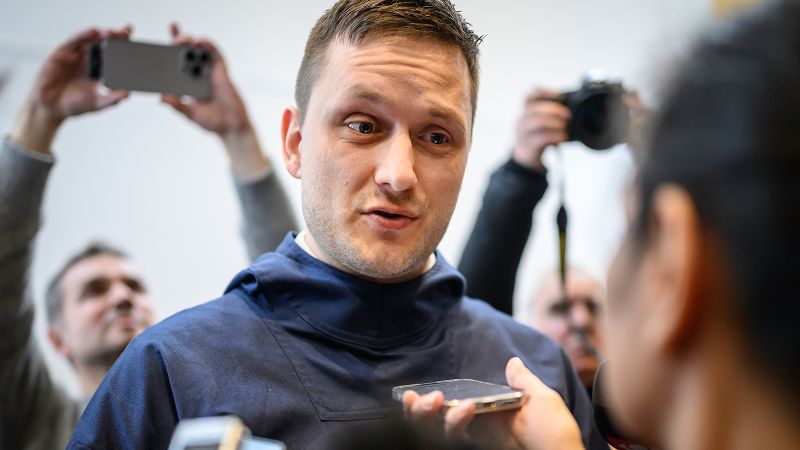


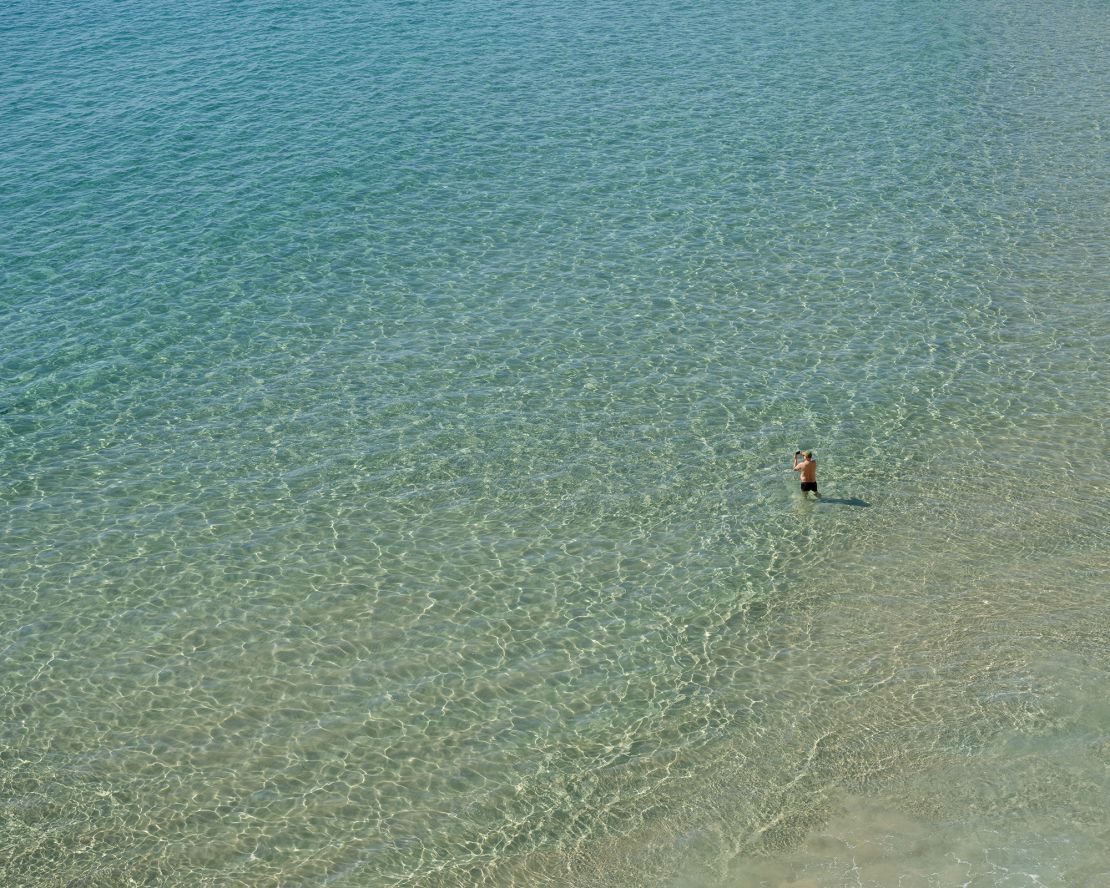
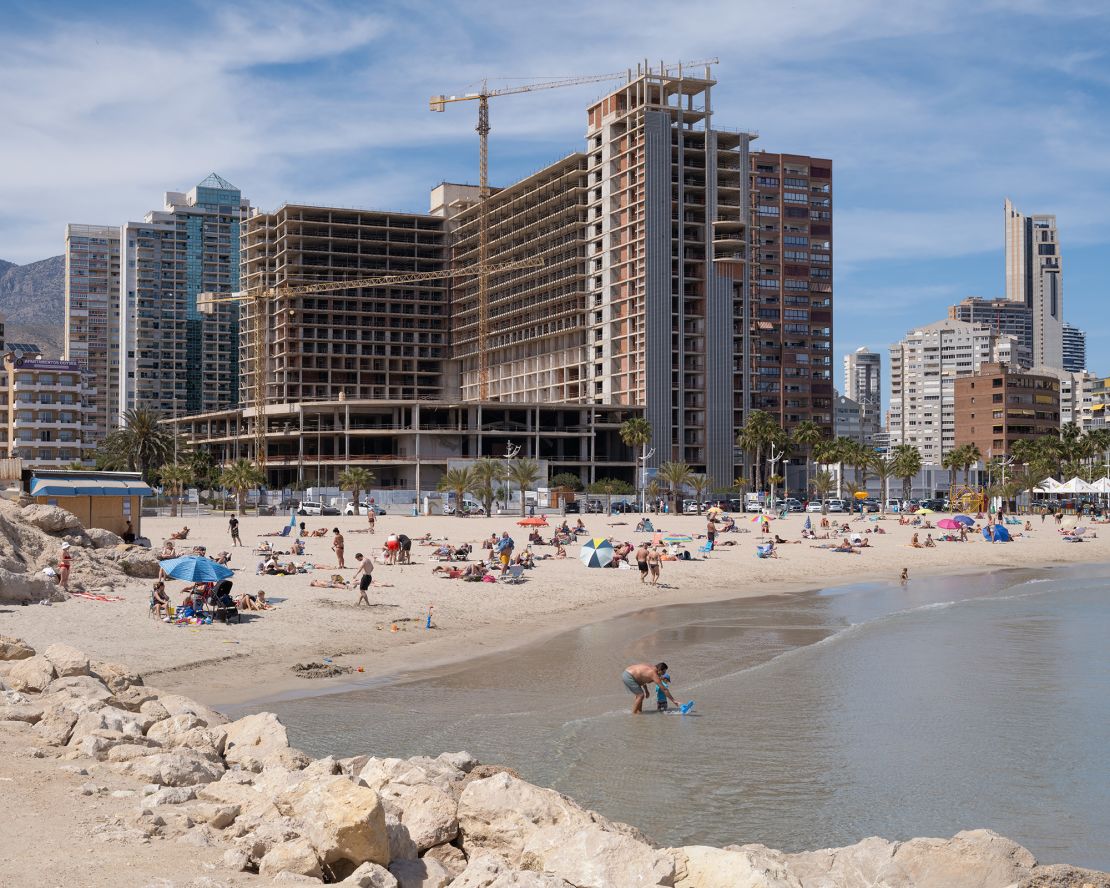
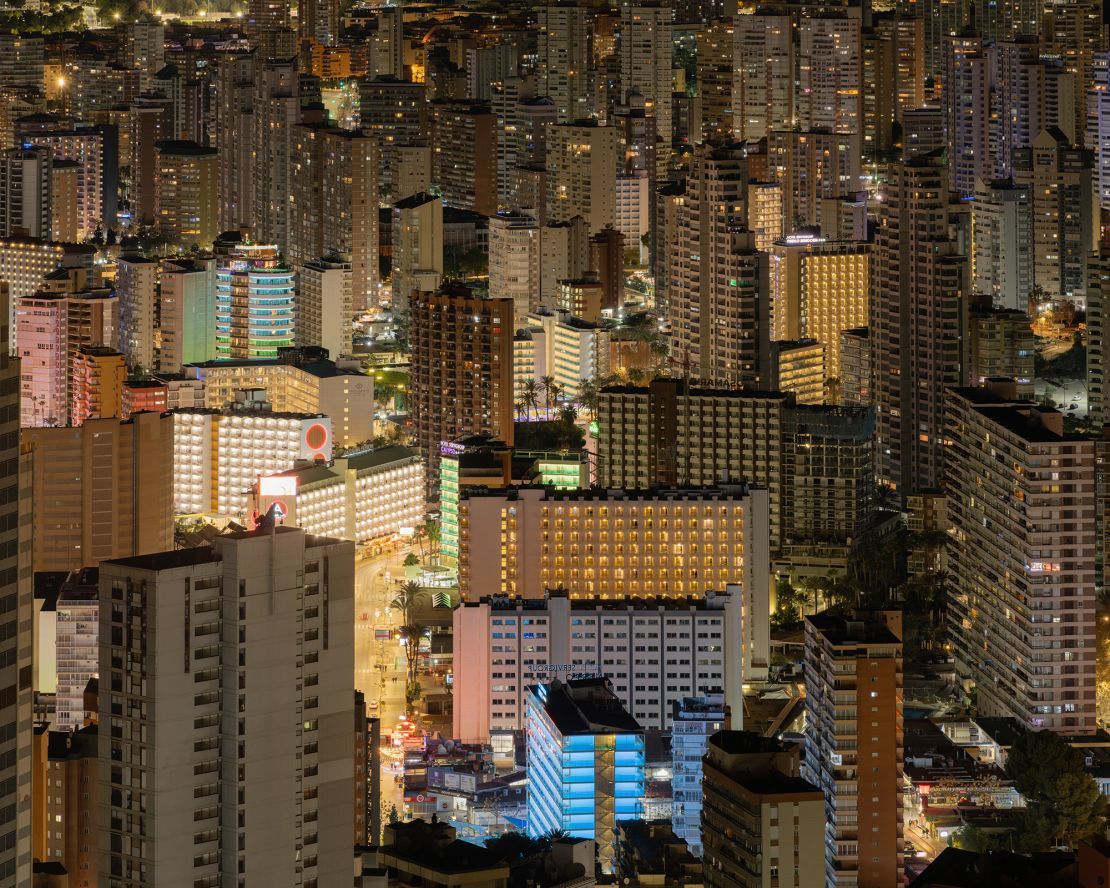
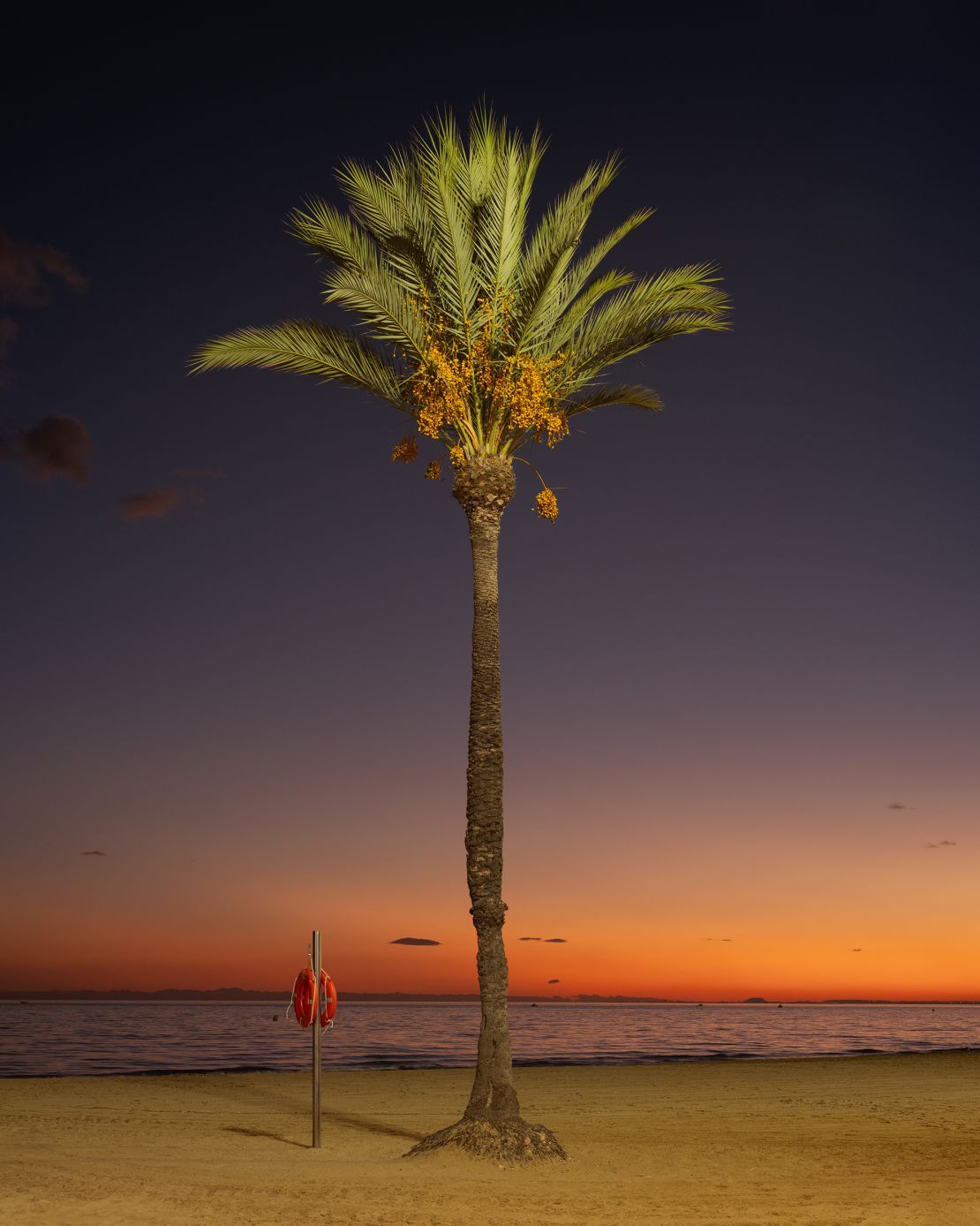

































 his speech, he urged world leaders to adopt concrete solutions to combat widespread poverty and environmental destruction.” class=”image__dam-img image__dam-img–loading” onload=’this.classList.remove(‘image__dam-img–loading’)’ onerror=”imageLoadError(this)” height=”2095″ width=”3000″ loading=’lazy’/>
his speech, he urged world leaders to adopt concrete solutions to combat widespread poverty and environmental destruction.” class=”image__dam-img image__dam-img–loading” onload=’this.classList.remove(‘image__dam-img–loading’)’ onerror=”imageLoadError(this)” height=”2095″ width=”3000″ loading=’lazy’/>





 during a visit in which he showed solidarity with migrants fleeing war and poverty. ” class=”image__dam-img image__dam-img–loading” onload=’this.classList.remove(‘image__dam-img–loading’)’ onerror=”imageLoadError(this)” height=”1669″ width=”2500″ loading=’lazy’/>
during a visit in which he showed solidarity with migrants fleeing war and poverty. ” class=”image__dam-img image__dam-img–loading” onload=’this.classList.remove(‘image__dam-img–loading’)’ onerror=”imageLoadError(this)” height=”1669″ width=”2500″ loading=’lazy’/>
 was there to pay tribute to those who died in the Holocaust. ” class=”image__dam-img image__dam-img–loading” onload=’this.classList.remove(‘image__dam-img–loading’)’ onerror=”imageLoadError(this)” height=”1664″ width=”2500″ loading=’lazy’/>
was there to pay tribute to those who died in the Holocaust. ” class=”image__dam-img image__dam-img–loading” onload=’this.classList.remove(‘image__dam-img–loading’)’ onerror=”imageLoadError(this)” height=”1664″ width=”2500″ loading=’lazy’/>




 two-day trip to Egypt to forge Muslim-Christian brotherhood and show solidarity with the country’s persecuted Coptic Christian minority.” class=”image__dam-img image__dam-img–loading” onload=’this.classList.remove(‘image__dam-img–loading’)’ onerror=”imageLoadError(this)” height=”1569″ width=”2790″ loading=’lazy’/>
two-day trip to Egypt to forge Muslim-Christian brotherhood and show solidarity with the country’s persecuted Coptic Christian minority.” class=”image__dam-img image__dam-img–loading” onload=’this.classList.remove(‘image__dam-img–loading’)’ onerror=”imageLoadError(this)” height=”1569″ width=”2790″ loading=’lazy’/>
 private audience at the Vatican in May 2017. Joining the President are his wife, Melania, and his daughter Ivanka.” class=”image__dam-img image__dam-img–loading” onload=’this.classList.remove(‘image__dam-img–loading’)’ onerror=”imageLoadError(this)” height=”2966″ width=”5272″ loading=’lazy’/>
private audience at the Vatican in May 2017. Joining the President are his wife, Melania, and his daughter Ivanka.” class=”image__dam-img image__dam-img–loading” onload=’this.classList.remove(‘image__dam-img–loading’)’ onerror=”imageLoadError(this)” height=”2966″ width=”5272″ loading=’lazy’/>







 the first time a pope has visited an Arab Gulf state, and it was the first time a pope had celebrated Mass in the Arabian Peninsula, the birthplace of Islam.” class=”image__dam-img image__dam-img–loading” onload=’this.classList.remove(‘image__dam-img–loading’)’ onerror=”imageLoadError(this)” height=”1403″ width=”2500″ loading=’lazy’/>
the first time a pope has visited an Arab Gulf state, and it was the first time a pope had celebrated Mass in the Arabian Peninsula, the birthplace of Islam.” class=”image__dam-img image__dam-img–loading” onload=’this.classList.remove(‘image__dam-img–loading’)’ onerror=”imageLoadError(this)” height=”1403″ width=”2500″ loading=’lazy’/>






 the first-ever papal visit to Iraq, and it was Francis’ first trip outside Italy since the start of the Covid-19 pandemic.” class=”image__dam-img image__dam-img–loading” onload=’this.classList.remove(‘image__dam-img–loading’)’ onerror=”imageLoadError(this)” height=”1654″ width=”2500″ loading=’lazy’/>
the first-ever papal visit to Iraq, and it was Francis’ first trip outside Italy since the start of the Covid-19 pandemic.” class=”image__dam-img image__dam-img–loading” onload=’this.classList.remove(‘image__dam-img–loading’)’ onerror=”imageLoadError(this)” height=”1654″ width=”2500″ loading=’lazy’/>

 shakes hands with a man dressed as Spider-Man while visiting with people at the Vatican in June 2021. The masked man, who works with sick children in hospitals, also gave a Spider-Man mask to the Pope.” class=”image__dam-img image__dam-img–loading” onload=’this.classList.remove(‘image__dam-img–loading’)’ onerror=”imageLoadError(this)” height=”1667″ width=”2500″ loading=’lazy’/>
shakes hands with a man dressed as Spider-Man while visiting with people at the Vatican in June 2021. The masked man, who works with sick children in hospitals, also gave a Spider-Man mask to the Pope.” class=”image__dam-img image__dam-img–loading” onload=’this.classList.remove(‘image__dam-img–loading’)’ onerror=”imageLoadError(this)” height=”1667″ width=”2500″ loading=’lazy’/>

 his trip to the Vatican in October 2021. Between them is Italian translator Elisabetta Savigni Ullmann. Challenge coins originated in the military, and this one included the insignia of a Delaware Army National Guard unit that Biden’s son Beau served in. Biden said during his visit that coins are given to “warriors and leaders” and that the pope is “the most significant warrior for peace I’ve ever met.” Biden, a devout lifelong Catholic, met with the Pope for 90 minutes and said he discussed “a lot of personal things” with the pontiff. It was the fourth meeting between Francis and Biden, but their first since Biden became President.” class=”image__dam-img image__dam-img–loading” onload=’this.classList.remove(‘image__dam-img–loading’)’ onerror=”imageLoadError(this)” height=”1667″ width=”2500″ loading=’lazy’/>
his trip to the Vatican in October 2021. Between them is Italian translator Elisabetta Savigni Ullmann. Challenge coins originated in the military, and this one included the insignia of a Delaware Army National Guard unit that Biden’s son Beau served in. Biden said during his visit that coins are given to “warriors and leaders” and that the pope is “the most significant warrior for peace I’ve ever met.” Biden, a devout lifelong Catholic, met with the Pope for 90 minutes and said he discussed “a lot of personal things” with the pontiff. It was the fourth meeting between Francis and Biden, but their first since Biden became President.” class=”image__dam-img image__dam-img–loading” onload=’this.classList.remove(‘image__dam-img–loading’)’ onerror=”imageLoadError(this)” height=”1667″ width=”2500″ loading=’lazy’/>



 Francis spoke of his “sorrow, indignation and shame” over the Catholic Church’s role in the abuse of Canadian Indigenous children in residential schools. He apologized and promised a “serious investigation” into what happened.” class=”image__dam-img image__dam-img–loading” onload=’this.classList.remove(‘image__dam-img–loading’)’ onerror=”imageLoadError(this)” height=”1973″ width=”3646″ loading=’lazy’/>
Francis spoke of his “sorrow, indignation and shame” over the Catholic Church’s role in the abuse of Canadian Indigenous children in residential schools. He apologized and promised a “serious investigation” into what happened.” class=”image__dam-img image__dam-img–loading” onload=’this.classList.remove(‘image__dam-img–loading’)’ onerror=”imageLoadError(this)” height=”1973″ width=”3646″ loading=’lazy’/>

 Benedict’s funeral was attended by tens of thousands at St. Peter’s Square.” class=”image__dam-img image__dam-img–loading” onload=’this.classList.remove(‘image__dam-img–loading’)’ onerror=”imageLoadError(this)” height=”2000″ width=”3000″ loading=’lazy’/>
Benedict’s funeral was attended by tens of thousands at St. Peter’s Square.” class=”image__dam-img image__dam-img–loading” onload=’this.classList.remove(‘image__dam-img–loading’)’ onerror=”imageLoadError(this)” height=”2000″ width=”3000″ loading=’lazy’/>
 Francis’ visit to the DRC — the first papal visit since 1985 — was part of a six-day trip that also included South Sudan. In those two countries, Catholics comprise about half of the population and the Church is a key stakeholder in health and education systems as well as in democracy-building efforts. ” class=”image__dam-img image__dam-img–loading” onload=’this.classList.remove(‘image__dam-img–loading’)’ onerror=”imageLoadError(this)” height=”1334″ width=”2000″ loading=’lazy’/>
Francis’ visit to the DRC — the first papal visit since 1985 — was part of a six-day trip that also included South Sudan. In those two countries, Catholics comprise about half of the population and the Church is a key stakeholder in health and education systems as well as in democracy-building efforts. ” class=”image__dam-img image__dam-img–loading” onload=’this.classList.remove(‘image__dam-img–loading’)’ onerror=”imageLoadError(this)” height=”1334″ width=”2000″ loading=’lazy’/>



 meets with Ukrainian President Volodymyr Zelensky at the Vatican in May 2023. It was the first face-to-face meeting between Zelensky and the Pope since Russia invaded Ukraine in February 2022. The Pope has been outspoken in his support for an end to the war.” class=”image__dam-img image__dam-img–loading” onload=’this.classList.remove(‘image__dam-img–loading’)’ onerror=”imageLoadError(this)” height=”1333″ width=”2000″ loading=’lazy’/>
meets with Ukrainian President Volodymyr Zelensky at the Vatican in May 2023. It was the first face-to-face meeting between Zelensky and the Pope since Russia invaded Ukraine in February 2022. The Pope has been outspoken in his support for an end to the war.” class=”image__dam-img image__dam-img–loading” onload=’this.classList.remove(‘image__dam-img–loading’)’ onerror=”imageLoadError(this)” height=”1333″ width=”2000″ loading=’lazy’/>
 He was on his way to a Rome hospital for abdominal surgery. The procedure was to repair a hernia that the Vatican said was causing “recurrent, painful and worsening” symptoms.” class=”image__dam-img image__dam-img–loading” onload=’this.classList.remove(‘image__dam-img–loading’)’ onerror=”imageLoadError(this)” height=”1333″ width=”2000″ loading=’lazy’/>
He was on his way to a Rome hospital for abdominal surgery. The procedure was to repair a hernia that the Vatican said was causing “recurrent, painful and worsening” symptoms.” class=”image__dam-img image__dam-img–loading” onload=’this.classList.remove(‘image__dam-img–loading’)’ onerror=”imageLoadError(this)” height=”1333″ width=”2000″ loading=’lazy’/>






 working session on artificial intelligence during the G7 summit near Bari, Italy, in June 2024. Francis, the first pope to participate in the summit, is determined to use the soft power of his office to try to ensure that the development of AI serves humanity and does not turn into a 21st-century Frankenstein’s monster.” class=”image__dam-img image__dam-img–loading” onload=’this.classList.remove(‘image__dam-img–loading’)’ onerror=”imageLoadError(this)” height=”1667″ width=”2500″ loading=’lazy’/>
working session on artificial intelligence during the G7 summit near Bari, Italy, in June 2024. Francis, the first pope to participate in the summit, is determined to use the soft power of his office to try to ensure that the development of AI serves humanity and does not turn into a 21st-century Frankenstein’s monster.” class=”image__dam-img image__dam-img–loading” onload=’this.classList.remove(‘image__dam-img–loading’)’ onerror=”imageLoadError(this)” height=”1667″ width=”2500″ loading=’lazy’/>


 leading a Holy Mass at the Esplanade of Tasi Tolu in Dili, East Timor, on September 10, 2024.
leading a Holy Mass at the Esplanade of Tasi Tolu in Dili, East Timor, on September 10, 2024.


 the pope was admitted to a hospital in Rome. It was later announced that he was battling pneumonia in both of his lungs.” class=”image__dam-img image__dam-img–loading” onload=’this.classList.remove(‘image__dam-img–loading’)’ onerror=”imageLoadError(this)” height=”1333″ width=”2000″ loading=’lazy’/>
the pope was admitted to a hospital in Rome. It was later announced that he was battling pneumonia in both of his lungs.” class=”image__dam-img image__dam-img–loading” onload=’this.classList.remove(‘image__dam-img–loading’)’ onerror=”imageLoadError(this)” height=”1333″ width=”2000″ loading=’lazy’/>

 he was discharged from the Gemelli Hospital in Rome in March 2025. Though he looked frail and struggled to speak, he addressed the crowd outside the hospital, thanking them and acknowledging one woman in the crowd who was holding flowers. He also gave a blessing, though he appeared to have some difficulty raising his arms.” class=”image__dam-img image__dam-img–loading” onload=’this.classList.remove(‘image__dam-img–loading’)’ onerror=”imageLoadError(this)” height=”1242″ width=”2000″ loading=’lazy’/>
he was discharged from the Gemelli Hospital in Rome in March 2025. Though he looked frail and struggled to speak, he addressed the crowd outside the hospital, thanking them and acknowledging one woman in the crowd who was holding flowers. He also gave a blessing, though he appeared to have some difficulty raising his arms.” class=”image__dam-img image__dam-img–loading” onload=’this.classList.remove(‘image__dam-img–loading’)’ onerror=”imageLoadError(this)” height=”1242″ width=”2000″ loading=’lazy’/>







